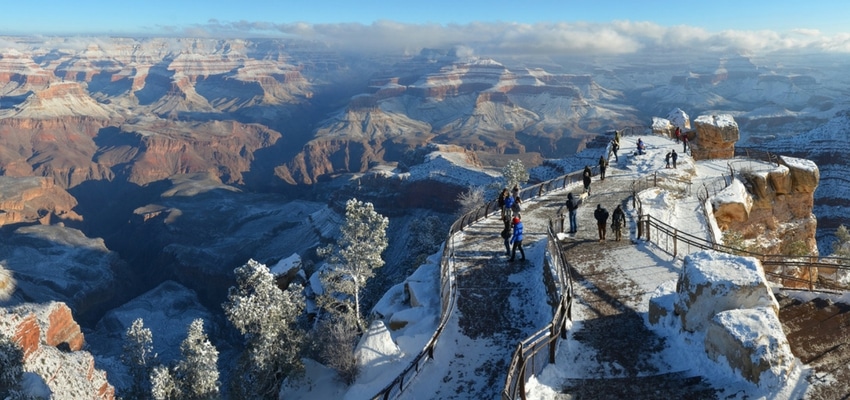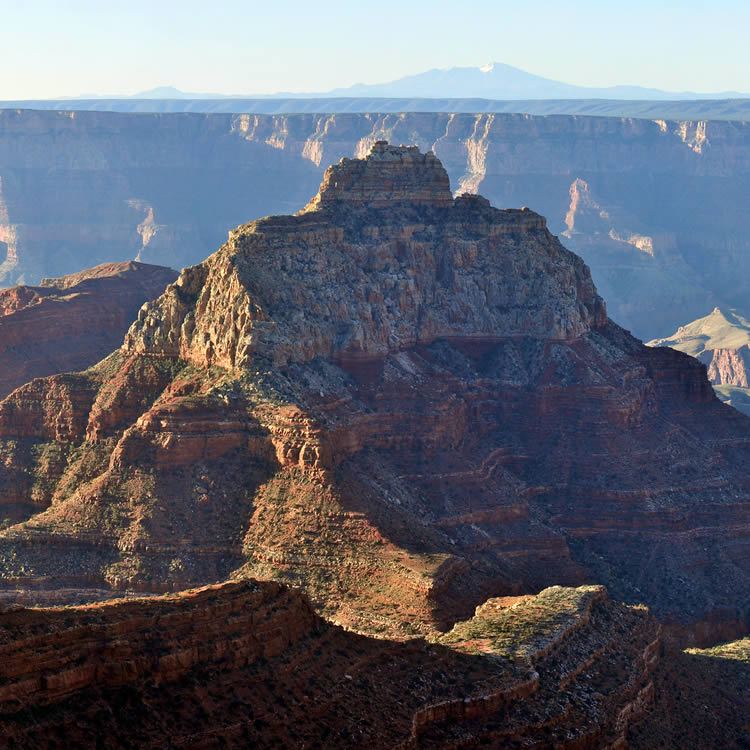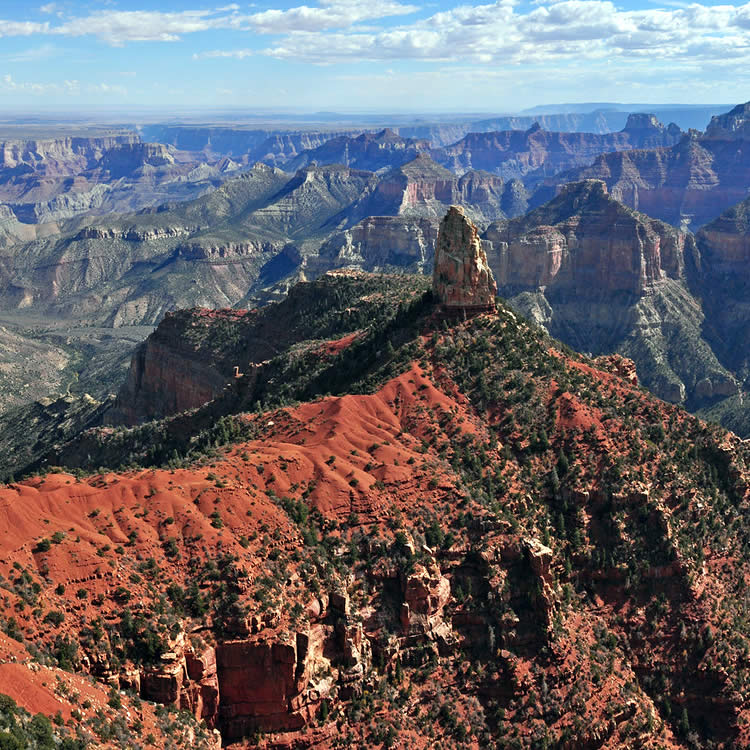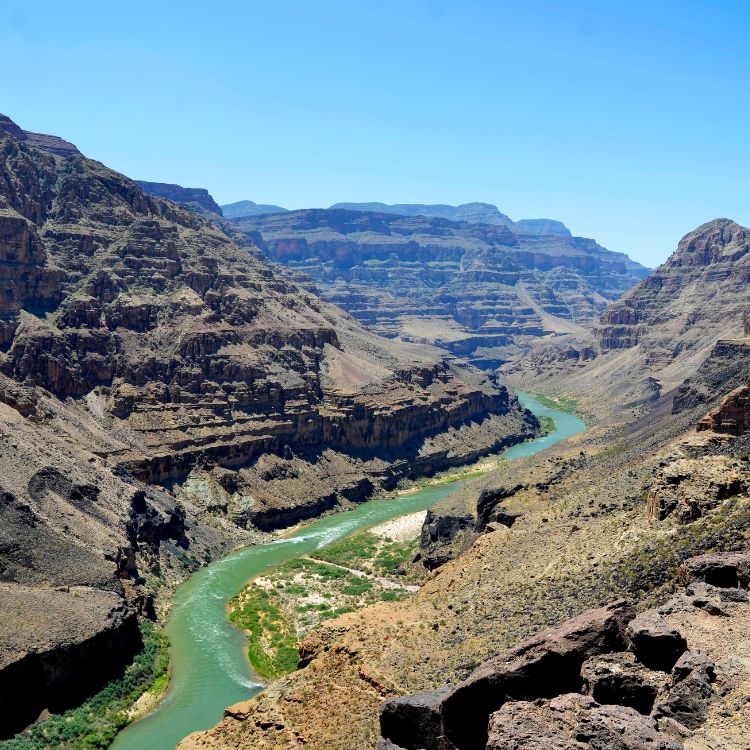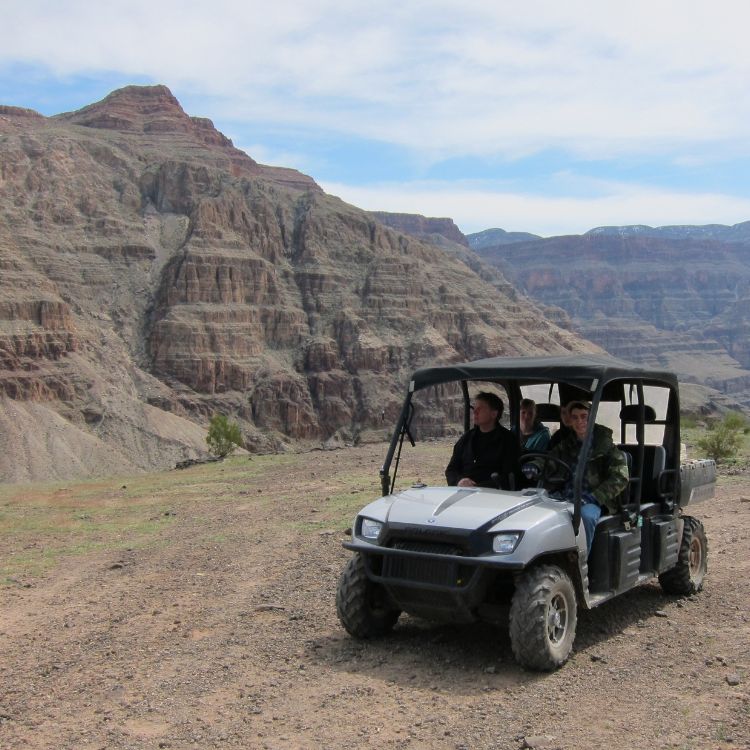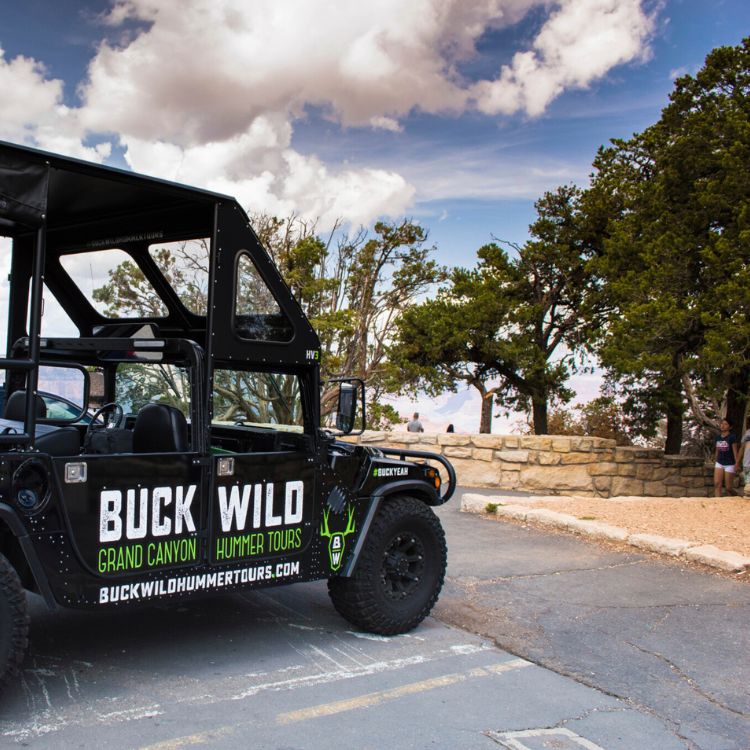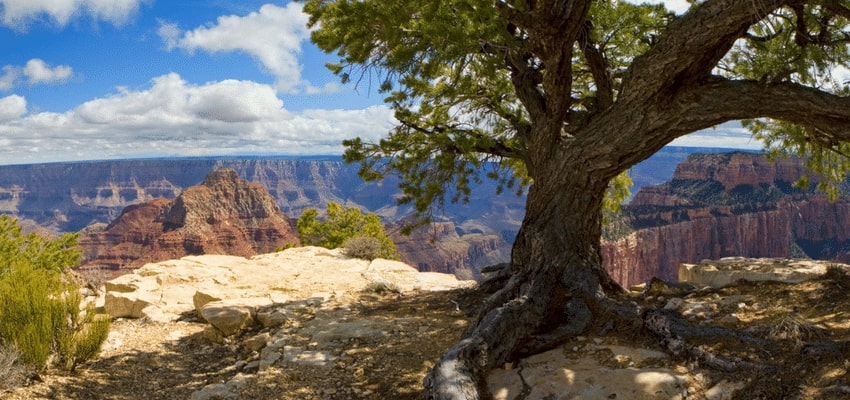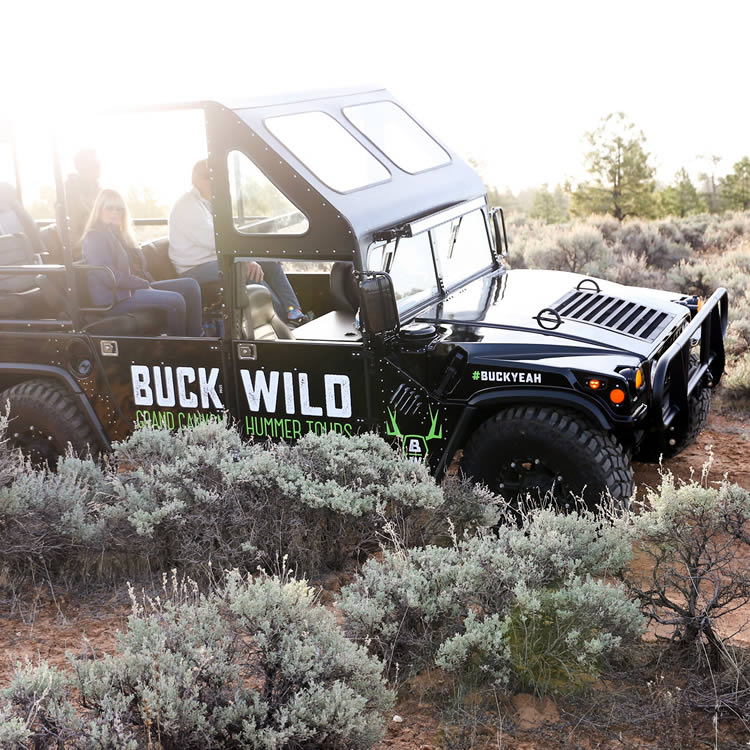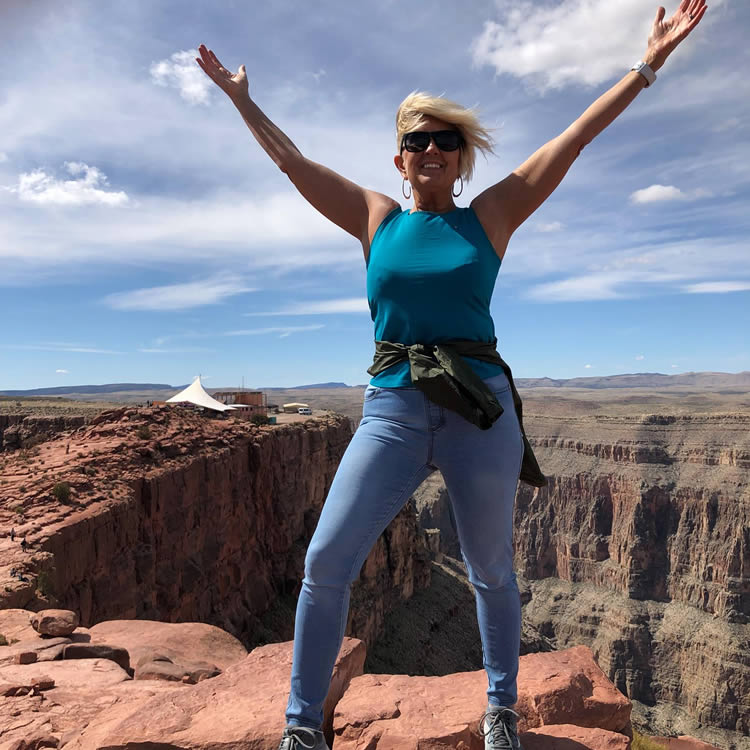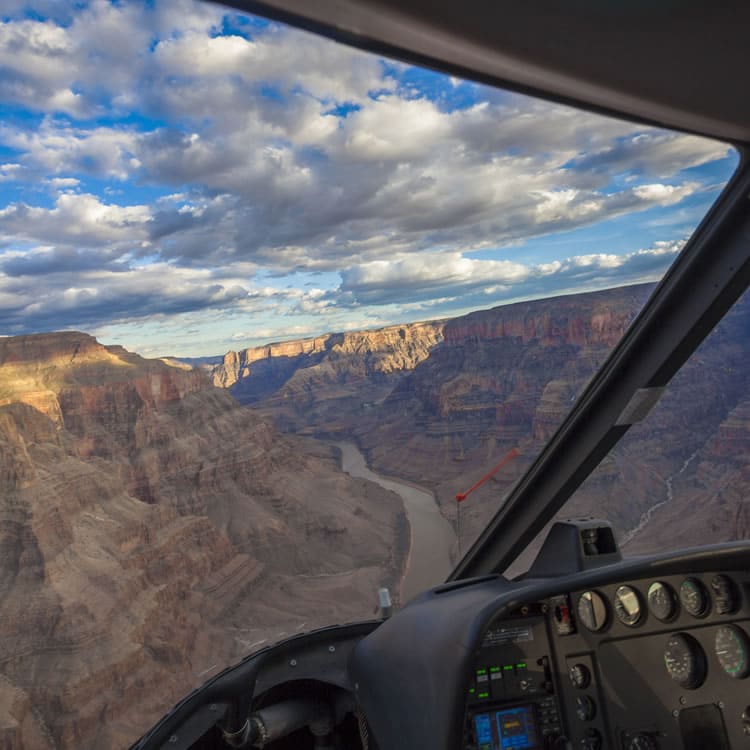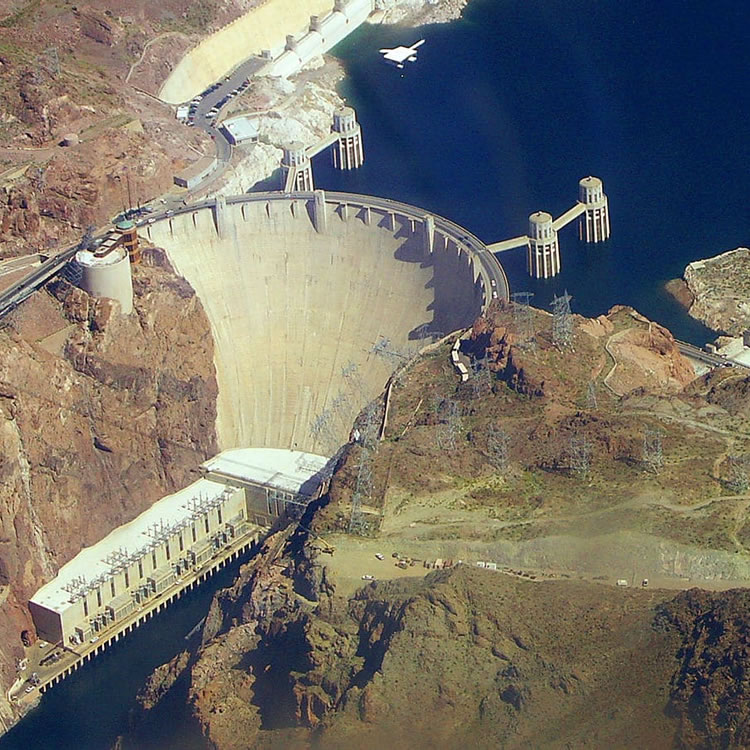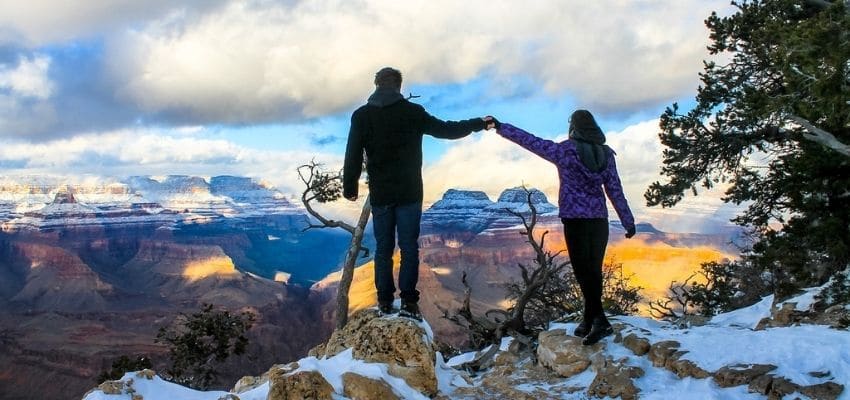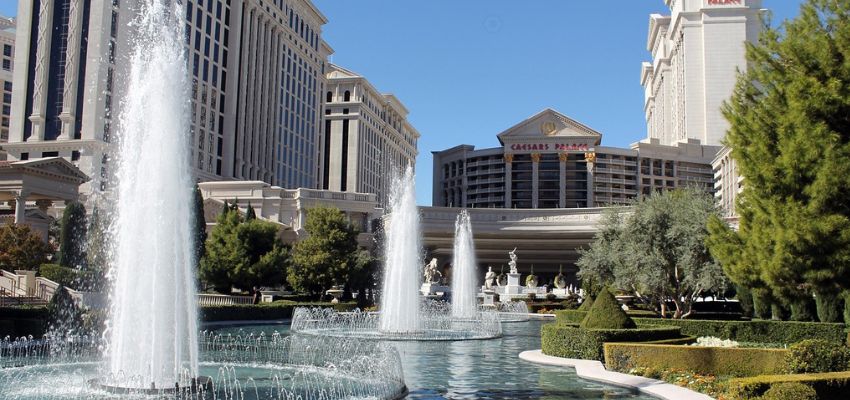If you’re visiting the West Rim, you can probably pack similarly to how you’d pack for spring.
When Is The Best Time of Year to Visit the Grand Canyon?
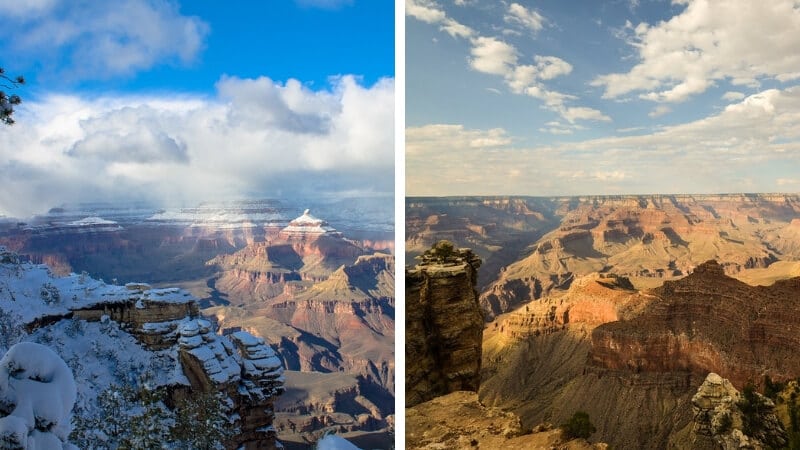
If the Grand Canyon is at the top of your travel list, your first question may not be what Rim to visit or whether to drive yourself or take a guided tour—it’s when you should visit.
The best time to visit the Grand Canyon depends on what you want to do when you’re there. Before you book a flight, consider what activities appeal to you most. For example:
- Would you rather hike along the Rim Trail or trek into the Grand Canyon?
- Do you want to camp overnight or would you prefer a day trip?
- Are you interested in an airplane or helicopter flight, or how about a floor landing?
- Do you want to see the Skywalk?
- Are you travelling with kids?
- Are you keen to go whitewater rafting on the Colorado River?
If your biggest priority is simply to see the sights and snap some photos, you’ll have a little more flexibility over your timeline, but some activities, such as camping, hiking, and rafting, are easier (and cheaper) to book during certain months. Whatever your preference is, our guide can help you choose the best time of year to visit the Grand Canyon.
Spring (March-May)
Spring and fall (the “shoulder seasons”) are often considered the best times of year to visit the Grand Canyon because daytime temperatures are typically lower and crowds are generally thinner.
Advantages
- Moderate temperatures are ideal for hiking. Typical daytime highs on the South Rim range from 50-60°, and between the mid 70s and high 80s on the West Rim.
- Crowds are much thinner than during the peak summer season.
- There is usually less rain than in the fall.
- It’s wildflower season on the South and North Rims. Bloom intensity varies according to how much precipitation falls in the winter, but it’s always a sight to behold.
Disadvantages
- It gets very cold at night, with lows ranging from the mid 20s-low 30s.
- The weather is somewhat unpredictable, with late-season snow and rain storms, which can make it hard to dress appropriately.
- Some areas, including the North Rim, are inaccessible due to snow.
What to pack for a spring visit
In the spring, layers are key to managing the unpredictable weather. Wear or pack these items:
- T-shirt
- Shorts
- Pants
- Light sweater or flannel button-down shirt
- Mid-weight waterproof outer layer
- Hat and scarf
- Comfortable socks and footwear, especially if you plan to hike.
- Sunscreen and sunglasses
- Reusable water bottle
Summer (May-August)
School is out, making summer the most popular time of year to visit the Grand Canyon. That means it’s also the most crowded season, as well as the hottest.
Advantages
- Summer holidays make it easier to plan and schedule a family vacation without taking time off school.
- Long, sunny days are perfect for exploring the Canyon
- Tourism services are in full swing, so there will be lots of activities to participate in while you visit.
- The North Rim is open! North Rim temperatures are much cooler, averaging around the low 60s to high 70s during the day.
Disadvantages
- It’s the busiest time of year, so crowds are thick and you might have trouble booking lodging. If you are only available in the summer but want to avoid the crowds, consider visiting the North Rim.
- Daytime temperatures can be very high, ranging from 70-mid 80s on the South Rim, mid 90s and above on the West Rim, and even hotter within the Canyon, which can make it very difficult to hike.
- The sun can quickly cause sunburns if you don’t apply sunscreen or wear appropriate clothing, especially on breezy days when you won’t feel the warning signs.
- It’s also easier to become dehydrated, especially if you’re hiking.
- Summer is monsoon season. Heavy rainstorms are common from July through mid-September, but they don’t last long.
What to pack for a summer visit
It’s hot during the day, but it gets cool at night in the summer. Pack or wear these items:
- Tank top and/or t-shirt
- Long-sleeved tee or long-sleeved button-down
- Shorts
- Pants
- Mid-weight waterproof jacket
- Comfortable socks and shoes
- Water-friendly sandals
- Sunscreen and sunglasses
- A hat
- Reusable water bottle
Visit the Grand Canyon North Rim this summer:
Grand Canyon North Rim Airplane & Ground Tour
$469.00 – $594.00Grand Canyon South & North Rim Helicopter Tour with Hummer
$399.00 – $439.00Autumn (September-November)
Similar to spring, autumn ushers in smaller crowds and more comfortable temperatures
Advantages
- Temperatures are starting to cool down, with average daytime temperatures ranging between 50° and 60°. Like the springtime, it can get very cool overnight.
- Kids are back in school, so crowds are much thinner.
- The autumn foliage can’t be beat.
- Shorter days make it easier to catch a Grand Canyon sunset.
Disadvantages
- Same as springtime, the weather can change unpredictably, with the potential for rain or early snowfall, as well as warmer-than-usual temperatures, which can make it difficult to pack accordingly.
What to pack for an autumn visit
Your packing list for an autumn visit will look very similar to a spring suitcase:
- T-shirt
- Shorts
- Pants
- Light sweater or flannel button-down shirt
- Mid-weight waterproof outdoor layer
- Hat and scarf
- Comfortable socks and footwear, especially if you plan to hike.
- Sunscreen and sunglasses
- Reusable water bottle
Winter (December-February)
Winter weather can cause delays and obstruct views, but with the smallest crowds of the year and the potential for a snow-covered Canyon, winter can be one of the most peaceful and picturesque times to visit.
Advantages
- Crowds are much thinner, which makes it easier to snap that perfect Grand Canyon photo, as well as book accommodations if you want to stay overnight.
- It’s easier to find hotel deals, and hotels are likely to be cheaper than during peak season.
- South Rim trails stay open—just make sure you pack the appropriate footwear and clothing so you can stay warm.
- You might get treated to a view of a snow-covered Grand Canyon.
Disadvantages
- Snow and other winter weather may cause travel delays or obstruct your view. It can also make it difficult to hike, especially into the Canyon. If you plan to hike, pack appropriately.
- It’s much cooler, with daytime highs on the South Rim averaging around the low 40s, and into the teens and low 20s overnight. For a warmer wintertime visit, head to the West Rim —daytime highs average in the mid 60s to low 70s.
- The North Rim is closed.
What to pack for a winter visit
With South Rim temperatures hovering around the low 40s, warm layers are essential for a winter visit:
- Thermal underwear
- Long-sleeved t-shirt and/or flannel button-down
- Sweater
- Warm pants
- Down vest or parka
- Gloves or mittens
- Hat
- Scarf
- Waterproof boots and wool socks
- Sunscreen and sunglasses (days are often sunny, and thanks to the high elevation, it’s easy to burn in the winter too).
Visit the Grand Canyon North Rim this summer:
Grand Canyon South Rim Bus Tour with Lunch & Free Wi-Fi
$85.00Grand Canyon South Rim Deluxe Upgrade with IMAX
$80.00 – $250.00Grand Canyon West Rim Bus Tour with Optional Skywalk & Free Wi-Fi
$85.00 – $150.00Grand Canyon Helicopter Floor Landing with Las Vegas Strip Upgrade
$579.00 – $654.00Conclusion
When you’re planning your trip to the Grand Canyon, thinking about what you want to see and do while you’re there can help you decide when is the best time to visit the Grand Canyon.
- Spring and Fall: Moderate temperatures and fewer crowds make the shoulder seasons an ideal time to visit, especially if you’re hoping to get in some hiking. Rafting tours are also available, and it may be easier to find accommodation if you want to stay overnight.
- Summer: Despite high temperatures and heavy crowds, summer is the most popular time of year to visit. If you plan to hike, dress accordingly and be sure to pack sunscreen and sunglasses. The North Rim is also open and is typically cooler and less crowded than the South Rim.
- Winter: It may be cool and there may be a greater possibility of winter weather, but the crowds are at their lowest, and winter (aside from the holiday season) is also the easiest, and probably cheapest, time of year to find accommodation. If you’re keen to hike, the Rim Trail is open year-round. However, the North Rim is closed, and rafting tours are not offered.
Whatever time of year you decide to visit, you can look forward to spectacular sites, unparalleled photo ops, and memories to last you a lifetime.

